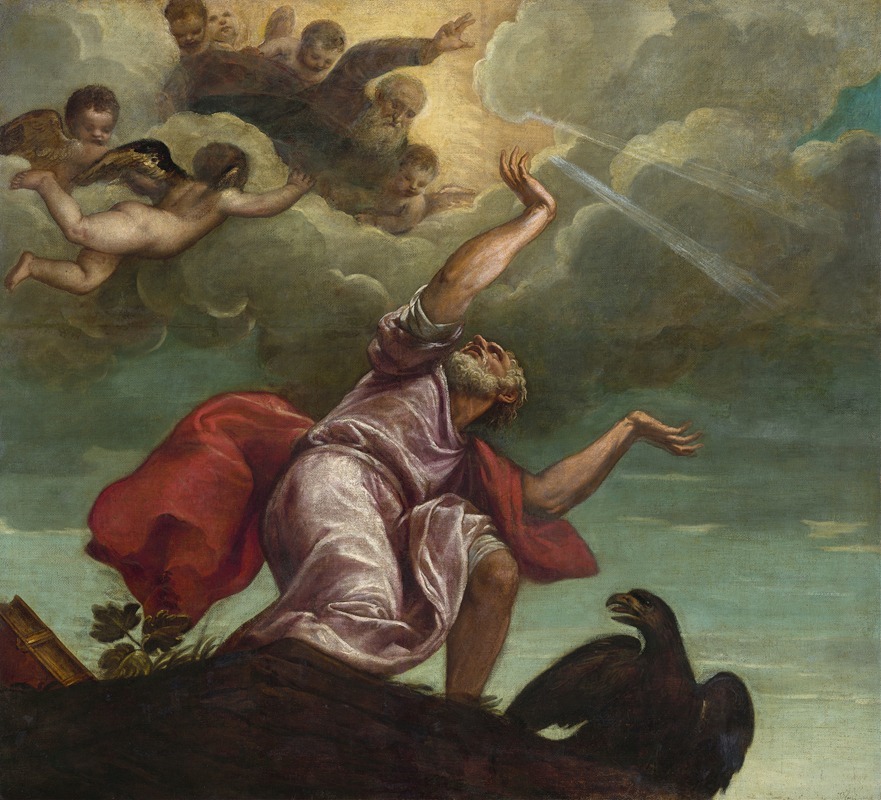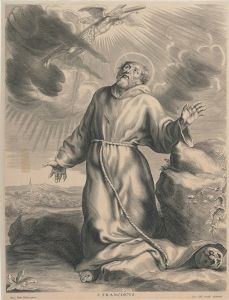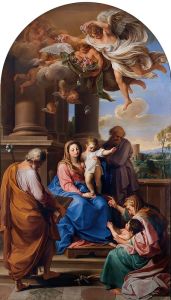
Saint John the Evangelist on Patmos
A hand-painted replica of Titian’s masterpiece Saint John the Evangelist on Patmos, meticulously crafted by professional artists to capture the true essence of the original. Each piece is created with museum-quality canvas and rare mineral pigments, carefully painted by experienced artists with delicate brushstrokes and rich, layered colors to perfectly recreate the texture of the original artwork. Unlike machine-printed reproductions, this hand-painted version brings the painting to life, infused with the artist’s emotions and skill in every stroke. Whether for personal collection or home decoration, it instantly elevates the artistic atmosphere of any space.
"Saint John the Evangelist on Patmos" is a painting by the renowned Italian Renaissance artist Titian. Created around 1544, this work is an oil on canvas and is currently housed in the National Gallery of Art in Washington, D.C. The painting depicts Saint John the Evangelist, one of the Twelve Apostles, during his exile on the Greek island of Patmos, where, according to Christian tradition, he wrote the Book of Revelation.
In the composition, Saint John is shown seated on a rocky outcrop, gazing upward in a moment of divine inspiration. He is surrounded by a dramatic and dynamic landscape, with a stormy sky and rugged terrain that emphasize the mystical and apocalyptic themes associated with the Book of Revelation. The figure of Saint John is rendered with Titian's characteristic mastery of color and texture, showcasing his ability to convey both physical presence and spiritual intensity. The saint holds a quill in his right hand and rests his left hand on an open book, symbolizing his role as the author of the apocalyptic visions.
The eagle, a traditional symbol of Saint John the Evangelist, is prominently featured in the foreground, reinforcing the saint's identity. The painting's dramatic use of light and shadow, as well as its rich, warm palette, are hallmarks of Titian's mature style. These elements contribute to the work's emotional depth and its ability to convey the transcendental nature of Saint John's experience.
"Saint John the Evangelist on Patmos" is considered an important example of Titian's religious works. It reflects the artist's deep engagement with biblical themes and his ability to translate complex theological ideas into compelling visual narratives. The painting also demonstrates Titian's innovative approach to composition and his skill in creating a sense of movement and drama.
This artwork was likely commissioned for a private patron, as was common for many of Titian's religious paintings during this period. Its exact provenance prior to its acquisition by the National Gallery of Art is not fully documented, but it has been recognized as a significant piece within Titian's oeuvre. Today, it remains a celebrated example of Renaissance art and continues to be studied for its artistic and historical significance.


















